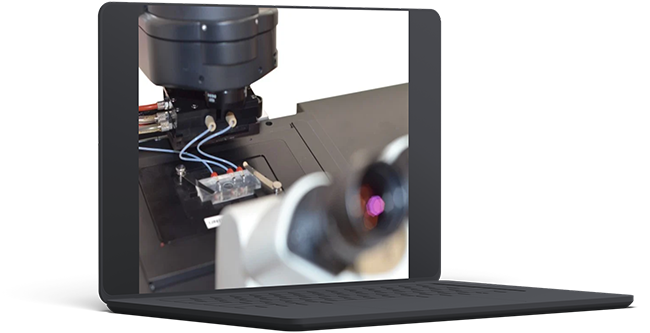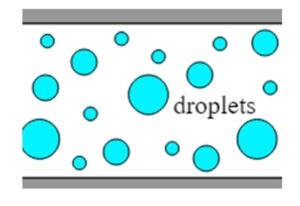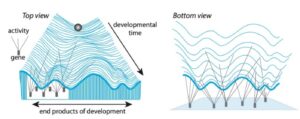Heater/ Cooler for Phase Separation Pack

Mammalian cell, C. elegans, Yeast & In vitro construction

Liquid liquid phase separation, protein, DNA/RNA condensate, phase diagram

Compatible inverted and upright microscope

Ultrafast & precise temperature shift [10′ sec - 5 to 45°C]
3 year publication impact factor with CherryTemp used for phase separation: 17.1
CherryTemp ultra-fast temperature controller allow you to:
- Visualize the effect of temperature changes on your sample in the seconds’ timescale
- In vivo imaging: membrane-less organelle dynamics, stress granules, IDPs
- In vitro imaging: molecular assemblies, droplet formation
- Compatible with a wide range of models: C. elegans, mammalian cells, in vitro protein assembly, purified protein, and more
Highlights:
- Perform temperature shifts in less than 10 seconds with +/- 0.1 °C precision.
- Dedicated protocols co-designed with our customers.
- Easy handling, fast mounting on a microscope stage
- HR microscopy compatible fits all upright and inverted microscopes.
publications featured cherrytemp
Some significative Phase Separation articles :
1) Elbaum-Garfinkle et al., 2025, RNA guanine content and G-quadruplex structure tune the phase behavior and material properties of biomolecular condensates, Scientific Reports
2) Jain et al., 2025, Sequence-encoded intermolecular base pairing modulates fluidity in DNA and RNA condensates, Nature Communication
3) Nixon-Abell et al., 2025, ANXA11 biomolecular condensates facilitate protein-lipid phase coupling on lysosomal membranes, Nature communication
4) Elbaum-Garfinkle et al., 2022, Liquid to solid transition of elastin condensates, PNAS
5) Elbaum-Garfinkle et al., 2020, Tunable multiphase dynamics of arginine and lysine liquid condensates, Nature Communications
6) Seydoux et al., 2019, A gel phase promotes condensation of liquid P granules in Caenorhabditis elegans embryos, Nature Structural & Molecular Biology
7) Kimble et al., 2019, Dynamics of Notch-Dependent Transcriptional Bursting in Its Native Context, Developmental Cell
8) Rosen et al., 2018, Nuclear Import Receptor Inhibits Phase Separation of FUS through Binding to Multiple Sites, Cell
More Phase Separation article published with our CherryTemp system here: Read more

free download ebook
—
complete guide to select the right temperature control system for live imaging
related resources
 Liquid-liquid Phase Separation In Biology...
Liquid-liquid Phase Separation In Biology... Beyond the limits of light diffraction: super resolution microsco...
Beyond the limits of light diffraction: super resolution microsco... Protocol for in vitro imaging of molecular assemblies...
Protocol for in vitro imaging of molecular assemblies...What Users Say About CherryTemp

“CherryTemp is a one-of-a kind device for the study of thermosensitive mutants and cytoskeleton dynamics. Its flexibility makes it very easy to adapt to various geometries, from cells to tissue explants or even whole animals !”
Dr. Emmanuel Derivery MRC Lab of Molecular Biology, UK
" The Cherry Temp system was essential to acquiring some of our key data on the temperature-dependence of FUS phase separation. The system worked extremely well in these biochemical analyses. It was easy to use and robust, and required only small amounts of material. ”
Prof. Michael Rosen UT SOUTHWESTERN, USA